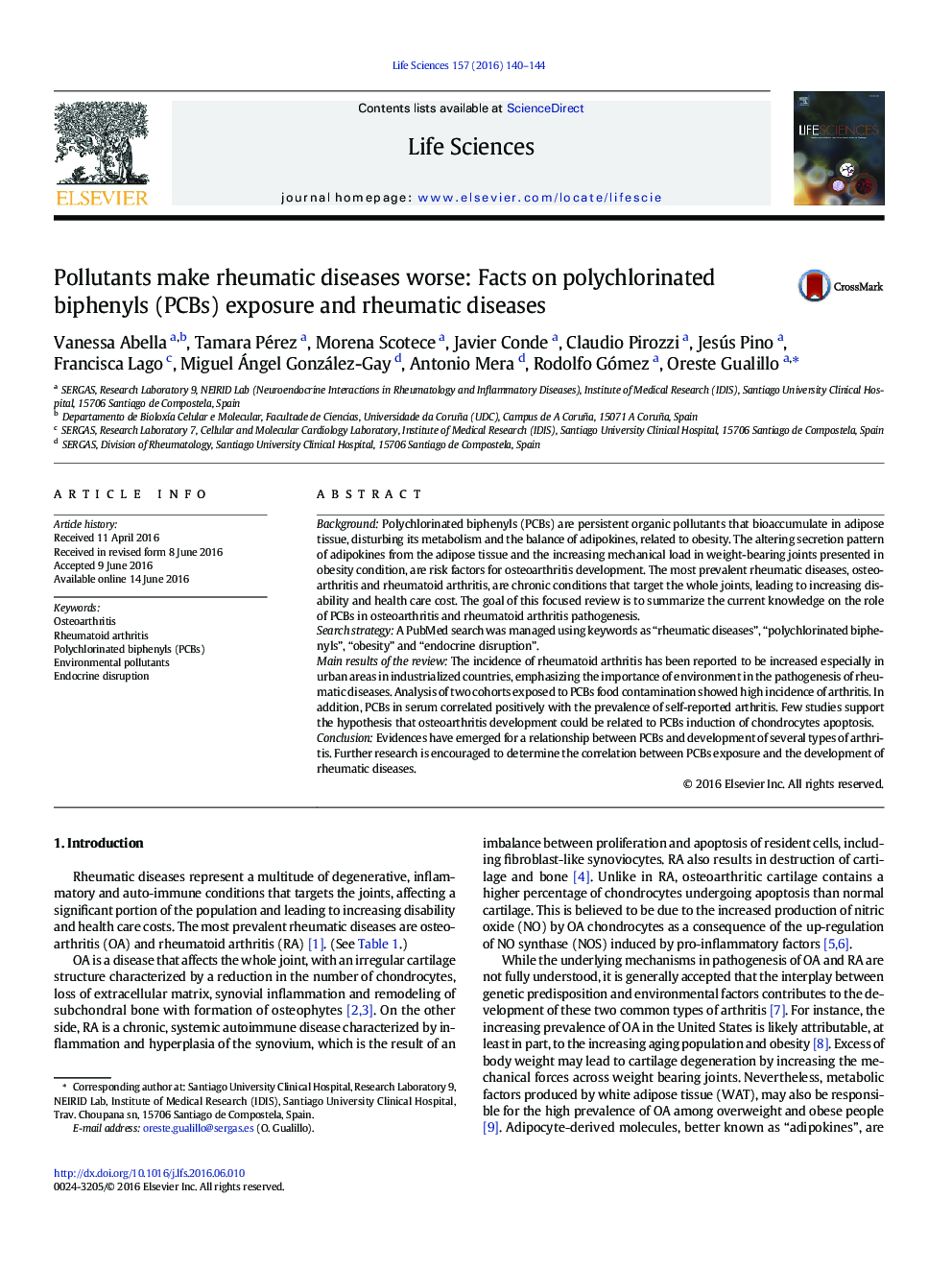| Article ID | Journal | Published Year | Pages | File Type |
|---|---|---|---|---|
| 2550440 | Life Sciences | 2016 | 5 Pages |
BackgroundPolychlorinated biphenyls (PCBs) are persistent organic pollutants that bioaccumulate in adipose tissue, disturbing its metabolism and the balance of adipokines, related to obesity. The altering secretion pattern of adipokines from the adipose tissue and the increasing mechanical load in weight-bearing joints presented in obesity condition, are risk factors for osteoarthritis development. The most prevalent rheumatic diseases, osteoarthritis and rheumatoid arthritis, are chronic conditions that target the whole joints, leading to increasing disability and health care cost. The goal of this focused review is to summarize the current knowledge on the role of PCBs in osteoarthritis and rheumatoid arthritis pathogenesis.Search strategyA PubMed search was managed using keywords as “rheumatic diseases”, “polychlorinated biphenyls”, “obesity” and “endocrine disruption”.Main results of the reviewThe incidence of rheumatoid arthritis has been reported to be increased especially in urban areas in industrialized countries, emphasizing the importance of environment in the pathogenesis of rheumatic diseases. Analysis of two cohorts exposed to PCBs food contamination showed high incidence of arthritis. In addition, PCBs in serum correlated positively with the prevalence of self-reported arthritis. Few studies support the hypothesis that osteoarthritis development could be related to PCBs induction of chondrocytes apoptosis.ConclusionEvidences have emerged for a relationship between PCBs and development of several types of arthritis. Further research is encouraged to determine the correlation between PCBs exposure and the development of rheumatic diseases.
Graphical abstractFigure optionsDownload full-size imageDownload high-quality image (73 K)Download as PowerPoint slide
